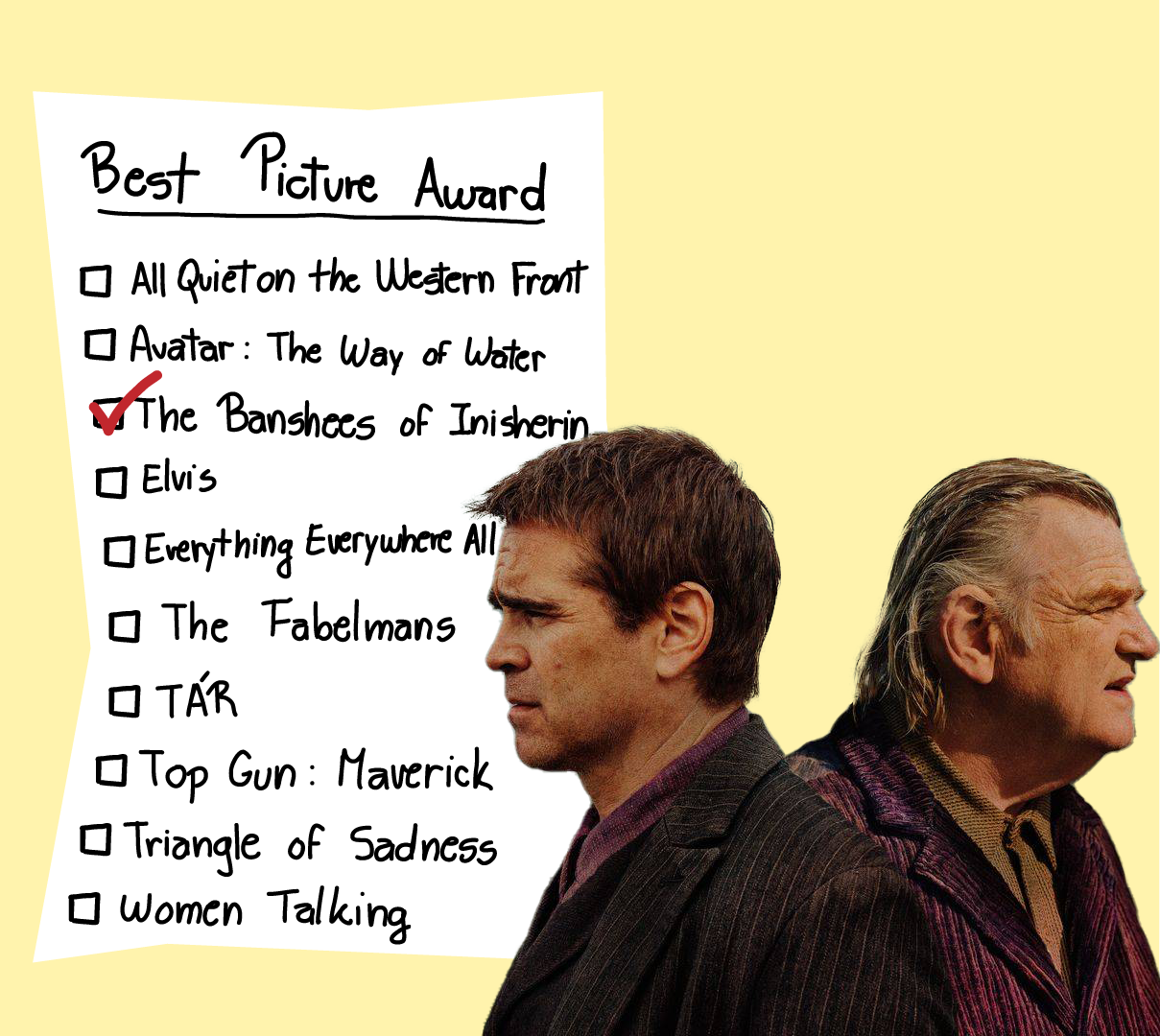
News
Summers Will Not Finish Semester of Teaching as Harvard Investigates Epstein Ties

News
Harvard College Students Report Favoring Divestment from Israel in HUA Survey

News
‘He Should Resign’: Harvard Undergrads Take Hard Line Against Summers Over Epstein Scandal

News
Harvard To Launch New Investigation Into Epstein’s Ties to Summers, Other University Affiliates

News
Harvard Students To Vote on Divestment From Israel in Inaugural HUA Election Survey
Case for Best Picture: 'The Banshees of Inisherin'

Disembodied fingers, a miniature donkey named Jenny, and a Catholic witch.
These are just three of the outlandish entities that figure prominently in Martin McDonagh’s “The Banshees of Inisherin.” And while these examples correctly convey the more-than-slightly wacky nature of the film, they fail to capture how McDonagh’s adept combination of such ingredients makes for one of the more strikingly beautiful and emotionally resonant films of 2022, which is wholly deserving of the Best Picture trophy.
“Banshees” tells the tale of Colm (Brendan Gleeson) and Padráic (Colin Farrell), two feuding men who cannot find a way to end their friendship on amicable terms. The film finds its setting in the cramped village of Inisherin on a small island off the coast of Ireland, moving almost exclusively between a pub, a house, and a cliff. In its unique storytelling pursuit, the film’s idiosyncratic Irish humor, stellar cast, and breathtaking cinematography all do their part in presenting a remarkably small, poignant tale.
Of its many strengths, “Banshees’” humor reigns supreme. While the film’s synopsis and dramatic marketing do not position the work as highly comedic, it becomes clear from the very first lines that laughter is going to play an important role in the story. More specifically, this comedy finds its roots in the many mundane yet zany quirks of daily life in a remote Irish village during the 1920s. Whether it’s the nosy postmaster begging for news and blaming open letters on “the heat,” the bartender who cannot choose a side in the friendship feud, or Padráic hiding behind a wall to avoid the aforementioned witch, the film constantly assails you with characters whose every action seems a stroke of comedic genius. None of the other Best Picture nominees made me laugh as hard as “Banshees,” and as a lover of laughing, this makes me enormously partial to its cause.
Of course, such comedic success would not be possible without strong and emotionally-grounded performances from the main cast, none of whom disappoint. However, the star among stars is Barry Keoghan, who plays a lovably daft villager named Dominic. Keoghan manages to embody a highly gullible and simple demeanor in a way that is funny without feeling cartoonish, making his moments of vulnerability feel painfully honest. Even down to his skittish, awkward mannerisms, Keoghan gives life to Dominic in a way that is so spectacular it becomes impossible to go unnoticed. And when the film begins to embrace its more dramatic underpinnings in the final act, Keoghan once again matches the tonal energy with aplomb and delivers the most poignant, heartfelt speech in the movie. I hope (but do not expect) to see Keoghan take home an Oscar of his own come Sunday.
Along with the commanding performances, this Irish film unsurprisingly stands out as one of the most naturally beautiful films of the year. Shot entirely on the Emerald Isle, “Banshees” treats its viewers to many aerial shots of the verdant Irish landscape and uses such moments to maintain the film’s slightly languid tempo. The film’s use of ocean imagery is especially impressive, with the bright blue Atlantic waves serving to reinforce changing moods in the film. Contained within these landscape shots are animals of all species, which the film actually uses as much more than mere accessories. In fact, animals like the lovable miniature horse Jenny and Colm’s shepherd dog feel as though they are standing in for the audience, watching the village madness unfold with a cocked head and wide eyes.
While the moral of its story struck me as frustratingly opaque upon my initial watch, “Banshees” has resonated with me in a way that few films do, stirring up thoughts about the nature of camaraderie, stoicism, and village life. But mostly, “Banshees” is just a funny, beautiful, and touching movie — three qualities that are surprisingly hard to come by in many films. And while it could be said that the film deserves two thumbs up in addition to an Oscar, those who watch “Banshees” will understand that such a compliment could only be made in poor taste.
—Staff writer Brady M. Connolly can be reached at brady.connolly@thecrimson.com. Follow him on Twitter @bradyconnolly44.
Want to keep up with breaking news? Subscribe to our email newsletter.
